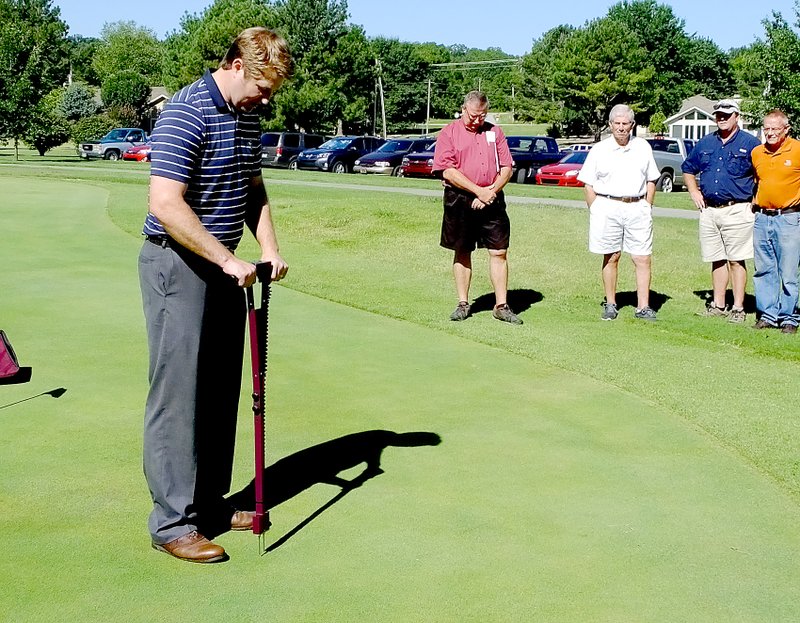Should greens be Bermuda or bentgrass? What are the disadvantages of overseeding?
When Ty McClellan, a representative of the United States Golf Association, visited Bella Vista last week, golfers had a chance to ask questions and air their own opinions.
On Aug. 13, McClellan toured the Scotsdale Golf Course with members of the Joint Advisory Committee on Golf and the Property Owners Association Board of Directors as well as a few golfers. Later that same day, he met with the golf committee and about 20 members at a public meeting in Riordan Hall.
Bella Vista is in a transition zone, he reminded the group, so there's no perfect grass. Both Bermuda and bentgrass can be successful here, but they will reach their peak at different times, which means there's no peak time for the courses.
At Scotsdale, 17 greens are bentgrass and there is only one Bermuda green, and that can be a problem for golfers. The hybrid Bermuda green plays faster than the other greens on the course. It was put in as an experiment, golf committee member Jake Grasmick told the group, because the former bentgrass green did not do well.
There may be an underlying drainage problem, said Keith Ihms, golf maintenance manager, and returning the green to bentgrass could be an expensive proposition.
But the Bermuda grass means a different lawnmower has to be used for that one green, Ihms remarked. The Bermuda is cut much shorter than grass on the other greens.
McClellan, who has been an agronomist in the northern area, shared some national perspectives about golf courses.
Water use is an issue in many areas, he said, and although there seems to be enough water in this area, all golf courses should be aware of water issues.
One way to conserve both water and costs is to concentrate resources on the areas that are used the most. At Riordan, he showed some PowerPoint slides that demonstrated how GPS trackers can help.
Golfers at a northern course were given small GPS trackers to keep in their pockets while they played. The results were combined and put on a map to illustrate which areas saw little use. Those areas can be naturalized, McClellan said, which would lower maintenance costs.
When Jake Grasmick of the golf committee commented that some golfers don't like tall weeds and some people are actually allergic to them, Ihms said natural areas get some maintenance but not as much as the fairway.
McClellan also shared some thoughts on overseeding.
The industry is moving away from overseeding, he said. Each time a course is overseeded, the original Bermuda grass is damaged, he explained.
Ihms said that while the fairways at Scotsdale look good now, it took the entire summer for them to recover from the problems caused by overseeding last winter.
The colorants that can be used on dormant Bermuda grass have improved, McClellan said. Not only do they look more natural, they also help the grass absorb sunlight, so the dormant season is shortened.
He also addressed the issue of driving on dormant grass when committee member Bob Nelles said Bella Vistans avoid playing when they are told to keep their golf carts on paths only.
With proper management, McClellan said, some traffic can be allowed without overseeding. He suggested the courses that allow carts off paths could be rotated.
Andy Mar, golf operations manager, said he could schedule golf groups on the courses that allow carts off paths.
Sports on 08/20/2014
